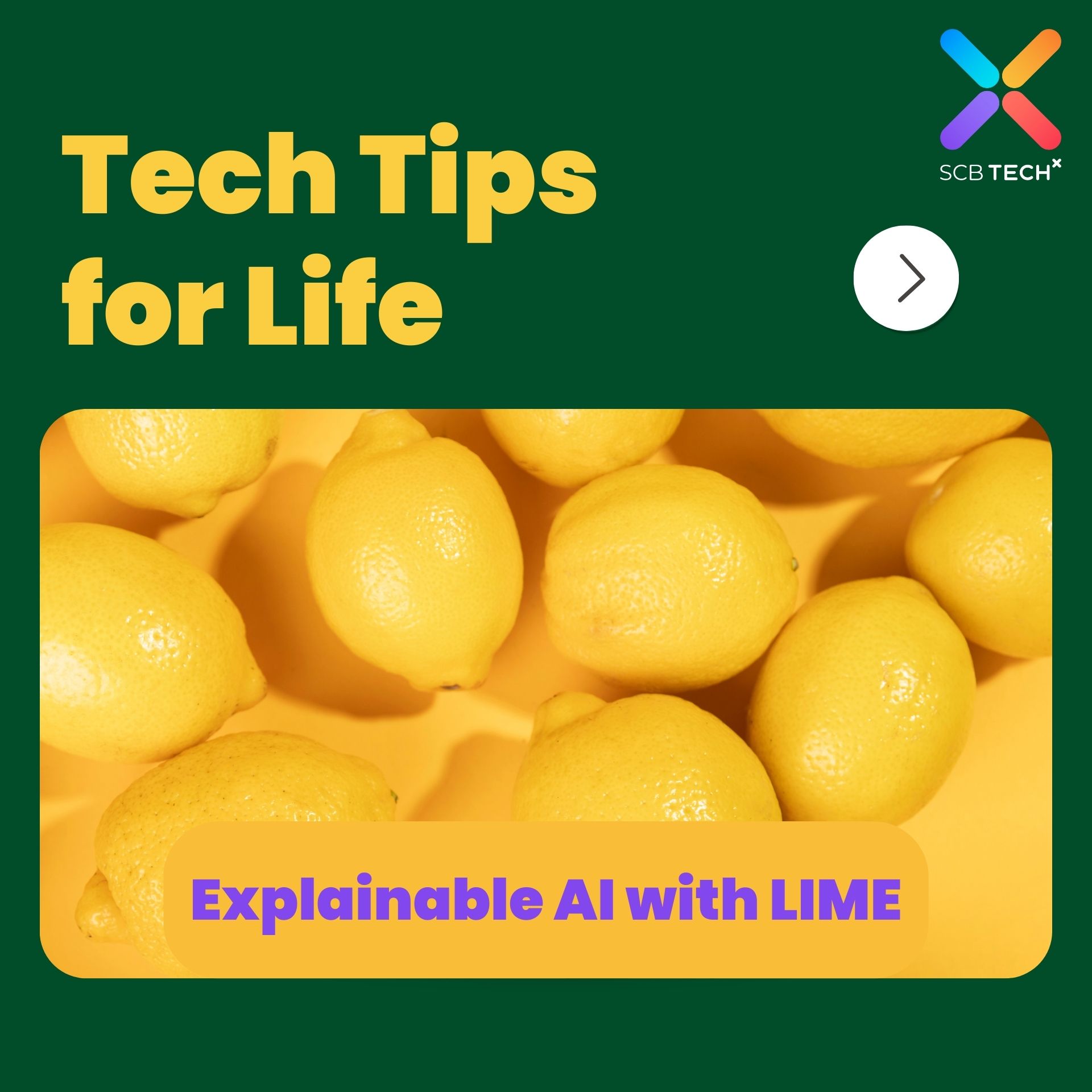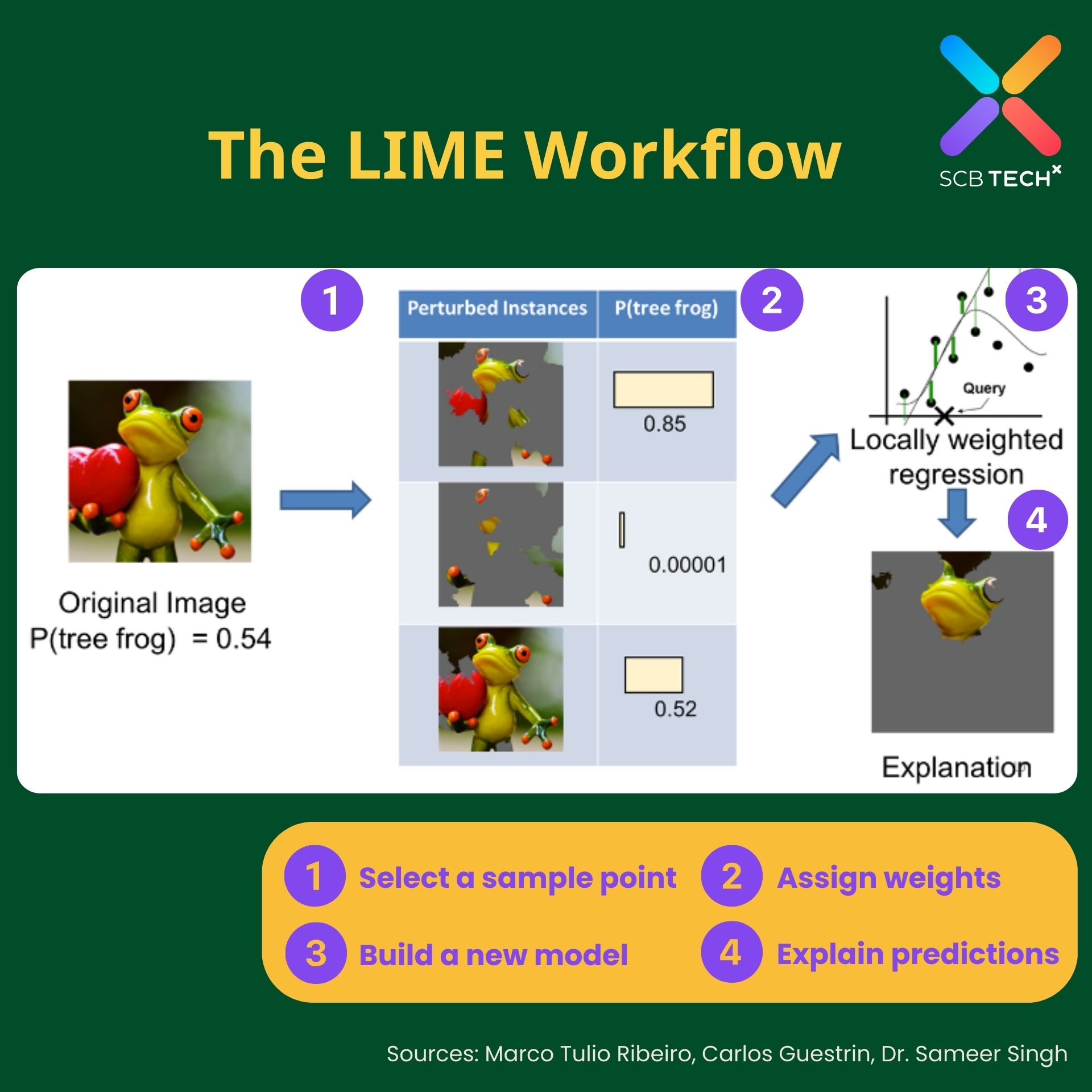
Presently, data analysis models are complex, leading to intricate and less interpretable outcomes. For instance, Deep Learning models accurately predict lung cancer from images but lack a rationale for diagnosis. Today, Senior Data Scientist Khun Bank Poompong Kaewumpai from SCB TechX will share a one-minute technique using LIME to address this issue.
We prefer employing the LIME (Local Interpretable Model-Agnostic Explanations) technique for problem-solving, as it serves as a translator, adept at simplifying intricate concepts. The LIME workflow unfolds in 4 steps:
- Select a sample point: Use an existing data point or part of the original data to create a new dataset, predicting outcomes with the original model.
- Assign weights: If the new dataset closely resembles the original, assign higher weights.
- Build a new model: Utilize the high-weighted data to construct a new model, such as a Linear Model or Decision Tree, accurately explaining outcomes.
- Explain predictions: Use the new model to explain the chosen sample point from step 1.

LIME is effective for explaining individual points, improving understanding, decision-making, and trust. However, it is not suitable for explaining the entire dataset.
Credit: https://bit.ly/3u1p2H5
Lastly, SCB TechX is ready to provide any organization with professional advice, technology solutions, and comprehensive Data Platform services through TechX Data Platform.
If you are interested, please feel free to contact us at contact@scbtechx.io
Or visit us for more details at https://bit.ly/3QjtHgl




